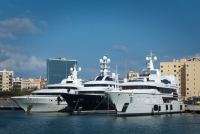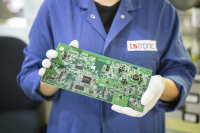If it isn’t convenient to interrupt flow into the plant during treatment times, multiple reactors can be employed, and some can fill while others are in settling and treatment phases. The sequencing in the name refers to the cyclic operation in which tanks are filled, then allowed to settle for sedimentation and reaction time, and then the liquor is “decanted” (discharged). These systems have several advantages over many others. This article will provide more details on how the process works and describe its advantages and disadvantages. An SBR is one of the several options Transcend Water’s design generator may offer for a particular plant design.
The Basics of Sequenced Batch Reactors
In the sequenced batch reactor, the entire wastewater treatment process takes place in one tank or reactor. Complete cycle times can vary from four to twenty-four hours, depending on the nature of the wastewater feed. Higher percentages of industrial waste in the feedwater usually lengthen the processing time.
As described in this brief video, the process takes place in stages, as follows:
Filling
Typically, filling takes about 25% of the total cycle time.
During filling, air is bubbled through the feedwater from a grid of fine bubblers on the vessel's floor. Aeration is cycled on and off to maintain the ideal dissolved oxygen level in the liquor as the liquid is termed while it's being processed. Maintaining the correct oxygen level sets the stage for the following reaction steps.
Reaction
The reaction portion of the treatment typically takes up about 35% of the total cycle time.
In this step, the microorganisms in the liquor react with the dissolved oxygen to oxidize and absorb the organic waste in the wastewater.
During the reaction and the following steps, no feedwater is admitted to the clarifier. Hence, the operator must provide some form of flow equalization, such as a holding tank or another reactor, to receive the influent to the plant while reaction occurs as described.
Settling
When the reaction process has run its course, the aeration is stopped, and the suspended solids resulting from the reaction settle to the bottom of the tank, becoming activated sludge. The water gradually clarifies.
Drawing Off the Supernatant
In this step, the supernatant, or clarified water above the sludge layer, is drawn off or “decanted” and either discharged into the environment or sent to tertiary treatment. In some cases, the effluent can be used in agriculture or as industrial feedwater.
Idle Period
In this part of the cycle, the reactor is idle while a portion of the sludge is wasted, leaving the correct amount to catalyze the reaction with the new batch of feedwater.
Some Optional Precess Adjustments
The main method of modifying the SBR process is by controlling the dissolved oxygen level maintained during the treatment cycle's fill and reaction steps. Controlling the oxygen level and the time allotted to the reaction step can encourage the consumption of various compounds present in different feedwater streams in varying concentrations.
Advantages and Disadvantages of Sequenced Batch Reactors
Some of the advantages of sequenced batch reactors that make them a popular choice, especially for smaller plants operating in rural or less densely populated areas are:
- Elimination of the need for multiple serial vessels during the secondary wastewater treatment process. There’s no need for a secondary clarifier.
- Elimination of the requirement for high-capacity RAS (returned activated sludge) pumps. The only sludge-handling requirement is for the sludge wasted during the idle period.
- Variation in oxygen levels allows for nitrification/denitrification with no other process adjustment.
- Organic and hydraulic load variation diurnally or seasonally are easily accommodated.
- Varying the oxygen levels during the reaction step mostly eliminates the need for other chemical additives.
- Capital and operating costs are low compared to many other wastewater treatment process options
The principal disadvantage of the sequenced batch reactor is that a single reactor cannot handle a continuous flow of feedwater. Some sort of inflow control like a holding tank or multiple reactors operating in parallel is necessary.
Transcend Water’s Transcend Design Generator provides wastewater treatment plant preliminary designs in a fraction of the time required for traditional manual calculations. This SaaS app offers plant designers multiple process options, including sequenced batch reactors, to choose from.
To see how Transcend can help you with your wastewater treatment needs, visit their website and contact their experts.








